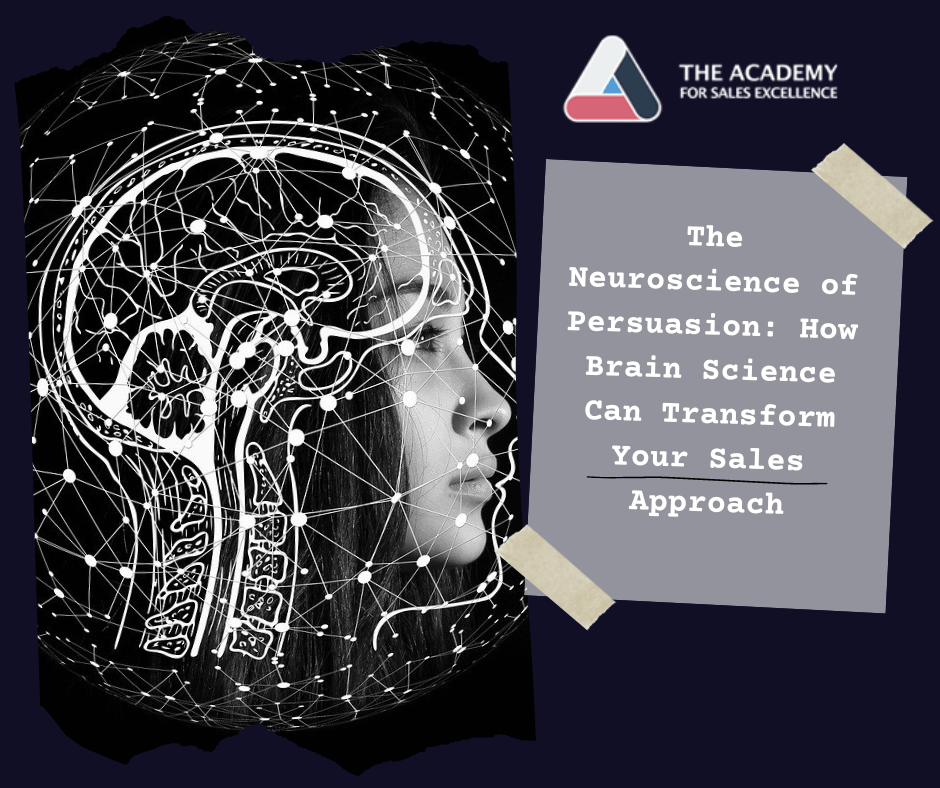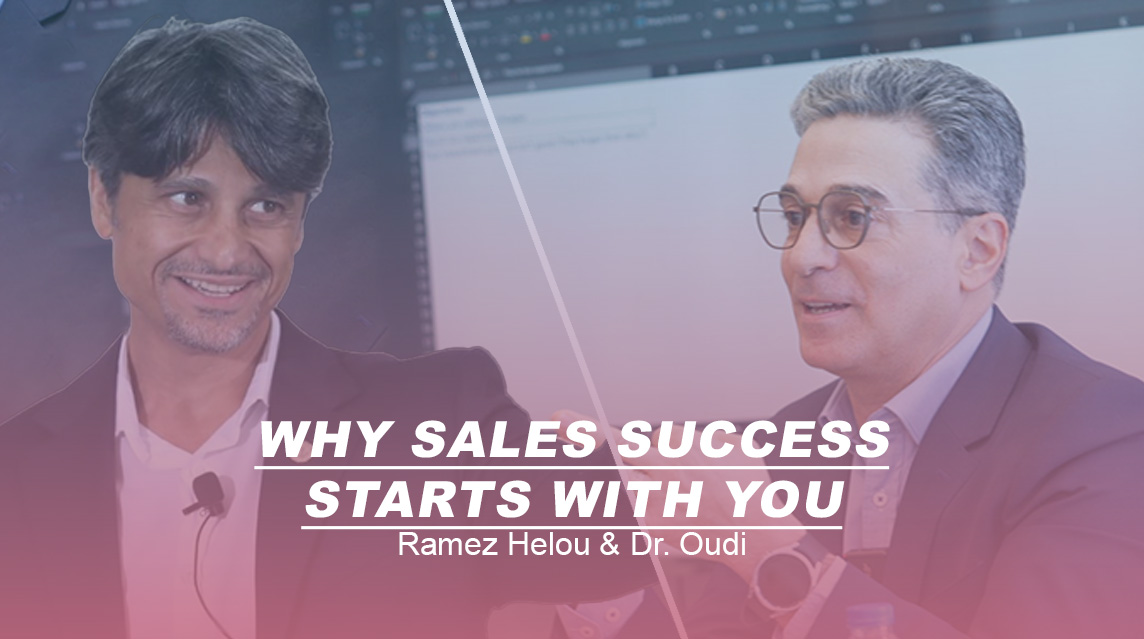In recent years, the intersection of neuroscience and marketing has given birth to a vibrant field of study: neuromarketing. At its core, neuromarketing aims to understand how our brains make buying decisions and how marketers can tap into these insights to improve their sales strategies.
Persuasion plays a very significant role in the world of marketing and sales. You need to attract and persuade customers to buy or avail your product or services. There’s a science behind persuasion that is quite effective when it comes to sales approach.
Let’s delve into how the nuances of brain science can enlighten your sales approach.
1. The Triune Brain Model and Sales
The triune brain model, proposed by neuroscientist Paul MacLean, suggests that the human brain can be understood as three distinct parts that correspond to three stages of our evolutionary history.
Each of these “brains” plays a role in our decision-making processes, including in the context of sales and marketing.
The Three Parts of the Triune Brain
- Reptilian Brain (Basal Ganglia): The oldest part of the brain, responsible for primal instincts like survival, dominance, and territoriality. It operates on a very basic level, responding to immediate threats and opportunities.
- Limbic System: This is the emotional center of the brain. It plays a role in forming memories and is responsible for feelings and emotional reactions. It is also where our feelings of pleasure and pain are processed.
- Neocortex: The newest and most advanced part of the brain, the neocortex is involved in higher-order functions like logical reasoning, abstract thought, and imagination.
How the Triune Brain Influences Sales Decisions
- Reptilian Brain: This part of the brain is looking for immediate benefits. It’s not interested in long-term benefits or abstract ideas. In a sales context, it responds to clear and direct benefits, such as a product saving time or money. Sales pitches that trigger a sense of urgency, exclusivity, or a direct threat/opportunity can tap into the reptilian brain.
- Limbic System: Emotional storytelling in marketing appeals to the limbic brain. If a consumer feels a strong emotional connection to a brand or product, they’re more likely to buy. This is why powerful narratives, testimonials, or ads that tug at the heartstrings can be so effective.
- Neocortex: This part of the brain responds to facts, figures, and logical arguments. Detailed product specifications, evidence-backed benefits, and logical reasons to buy appeal to the neocortex.
2. The Power of Emotion: A Deep Dive into Human Behavior and Decision Making
Emotion has long been recognized as a potent force driving human behavior. While logic and reason play crucial roles in our decision-making processes, emotions often hold the steering wheel. This powerful influence extends from our personal relationships to our purchasing decisions.
- Emotions vs. Rationality: Historically, emotions and rationality have been viewed as opposing forces. The Enlightenment era emphasized reason over emotion, suggesting that true understanding and progress came from logic alone. However, recent neuroscience and psychological studies have highlighted the intertwined nature of emotion and cognition.
- The Neurological Basis of Emotions: The limbic system, which includes structures like the amygdala and the hippocampus, is crucial for emotional processing. Notably, the amygdala plays a pivotal role in fear responses and emotional memory. When we experience events, the emotional significance of that event is recorded, influencing future decisions and reactions.
- Emotional Memory and Behavior: Our past emotional experiences can strongly dictate our future behaviors. For instance, if someone has a negative experience with a brand or product, the emotion tied to that memory (like frustration or disappointment) will likely deter them from engaging with that brand in the future. Conversely, positive emotional experiences foster loyalty and repeated engagement.
- Emotion in Decision Making: Even when we believe we’re making purely rational decisions, emotion often plays a role. For instance:
- Purchasing Decisions: People might buy a luxury car not only for its technical specifications but also because of the status or feelings of success it confers.
- Brand Loyalty: Customers often stay loyal to brands that evoke positive emotions or align with their personal values or identity.
- Emotions in Marketing and Sales: Recognizing the power of emotion, businesses have long utilized emotional appeals in marketing campaigns. From heartwarming stories to humor and even fear (think of insurance commercials), tapping into emotions can drive consumer action.
- The Double-Edged Sword: While emotions can be harnessed for positive outcomes, they can also lead to impulsive and sometimes regrettable decisions. It’s essential to find a balance and ensure that emotional appeals don’t manipulate or mislead.
- Emotion and Digital Technology: In the age of social media and digital technology, emotions are amplified. Viral content often evokes strong emotions, whether laughter, anger, or sadness. Brands and content creators should be wary of the ethical implications and strive for genuine emotional connections rather than mere sensationalism.
Undeniably, the power of emotion influences our daily decisions, molds our memories, and even determines our loyalties to brands and products. By recognizing and respecting this power, we can make more informed decisions and foster authentic connections in both personal and business realms.
3. The Principle of Reciprocity: Understanding Human Nature in Interactions and Influence
Neuroscientists have found that humans are hardwired to return favors and create balanced relationships. This principle, known as reciprocity, triggers the release of oxytocin, a hormone that promotes trust and bonding.
At the heart of social interactions, business dealings, and human relationships lies a powerful psychological principle: reciprocity. Rooted deep in our evolutionary history, the principle of reciprocity reflects our inherent desire to repay or return favors, goods, or kindnesses offered to us.
What is the Principle of Reciprocity?
Reciprocity is a social norm that suggests people are inclined to return favors or actions in kind. If someone performs a kind act or gives us something, we feel an inherent obligation to repay that gesture, even if it wasn’t solicited.
Practical Applications
- Business and Sales: It’s not uncommon for businesses to give away free samples, bonuses, or complimentary services. The principle of reciprocity suggests customers will feel a natural urge to reciprocate, often through a purchase or loyalty to the brand.
- Negotiations: Starting with a larger request and then conceding to a smaller request (which was the actual goal) can make the other party more likely to agree. They perceive the concession as a favor and feel compelled to return it.
- Networking: Acts of goodwill, like introductions or sharing valuable resources, can lay the groundwork for future collaborations or returned favors.
The principle of reciprocity is a testament to the interconnectedness of human beings. It drives us to forge bonds, build communities, and engage in mutual aid. By understanding and respecting this principle, businesses and individuals can foster authentic relationships built on trust and genuine exchange.
4. The Anchoring Effect: Navigating Cognitive Biases in Decision Making
Human minds are intricate and are often influenced by an array of cognitive biases that shape perceptions and decisions. One such bias is the anchoring effect. Widely observed in various scenarios, from financial decisions to daily purchases, the anchoring effect can significantly sway our judgment.
The anchoring effect is a cognitive bias where individuals rely heavily on an initial piece of information, known as the “anchor”, to make subsequent judgments.
Once an anchor is set, other judgments and decisions are made by adjusting away from that anchor, often insufficiently, leading to potential errors or biases in the final decision.
Practical Implications
- Pricing and Sales: Retailers often use the anchoring effect in pricing strategies. For instance, by first showing a higher “original” price and then offering a “discounted” price, consumers perceive they’re getting a deal, even if the discounted price is still high.
- Negotiations: In negotiations, the person who makes the first offer can set an anchor point that can sway the entire negotiation process. For example, if you’re selling a car and you start with a higher price, the buyer is likely to adjust their counteroffer around that anchor, even if the initial price was significantly inflated.
By recognizing its influence and actively seeking a broadened perspective, individuals can make more informed, less biased decisions. Whether in business or personal choices, understanding the anchoring effect is a step towards more rational decision-making.
5. The Power of Social Proof: How Collective Influence Shapes Individual Choices
In today’s interconnected world, the opinions and actions of others exert an enormous influence on our own decisions. This phenomenon, known as social proof, is a dominant force, especially in the age of online reviews, influencers, and social media. But what underlies this potent psychological principle?
Why do humans rely on social proof?
- Evolutionary Advantage: Historically, following the group was beneficial for survival. If everyone was running in one direction, it probably meant danger was coming from the other direction.
- Cognitive Shortcuts: In an information-saturated world, we use shortcuts to make decisions, and looking to others is one of the most common shortcuts.
Types of Social Proof
- Expert: When an expert in a given field recommends a product or service, people are more likely to trust it.
- Celebrity Endorsement: Celebrities, due to their public image, have a strong influence on their followers’ purchasing decisions.
- User Testimonials: Reviews and testimonials from regular users or customers can significantly influence buying behavior.
- Wisdom of Crowds: This is seen when a product or place becomes popular, and its very popularity is the testament to its value.
- Friends and Peer Recommendations: Personal recommendations from friends or family can heavily sway an individual’s choice.
Applications of Social Proof in Business and Marketing
- Product Reviews: Companies like Amazon prominently display product reviews because they know potential buyers look for validation from previous buyers.
- Testimonials: Highlighting testimonials on websites or in advertising can significantly improve conversion rates.
- FOMO (Fear of Missing Out): Marketers create a sense of urgency showing that “everyone else is doing it.”
- Showcasing Popularity: “Best-seller” tags, “most popular” badges, or “X number of users” help in signaling a product’s or service’s acceptance by the masses.
Overcoming the Influence
- Awareness: Being aware of the impact of social proof is the first step in mitigating its effects.
- Critical Thinking: Before making decisions, especially important ones, individuals should evaluate the source of information and consider alternative viewpoints.
- Seek Diverse Opinions: Consulting a varied group of people can counteract the tunnel vision that sometimes arises from following the majority.
While social proof is a natural and often beneficial psychological mechanism, it’s important for individuals to recognize its influence and ensure that it’s used in a positive way, both in personal decisions and in broader societal contexts.
Wrapping Up
By understanding the inner workings of the human brain, sales professionals can navigate their approach with enhanced empathy, insight, and precision. As the veil is lifted on the intricacies of persuasion, this knowledge becomes a potent tool for crafting authentic connections, overcoming objections, and ultimately, driving success in the world of sales.
Ready to take your sales acumen to new heights? Join us at The Academy for Sales Excellence and harness the power of neuroscience-driven techniques. Elevate your sales game, master the art of persuasion, and revolutionize your approach. Embrace the future of sales success today!




